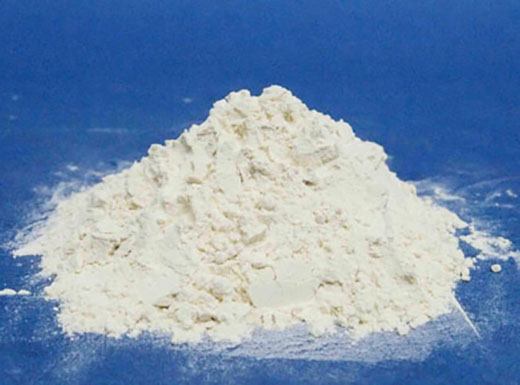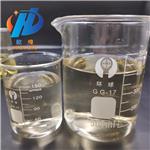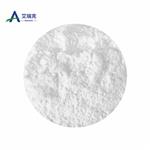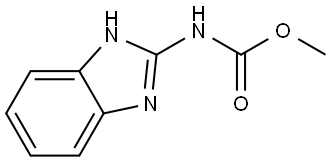The applications of carbendazim in agriculture
Background
Carbendazim is also known as mianweiling and benzimidazole 44. Carbendazim is a broad-spectrum fungicide, which has the effect of controlling the diseases of many crops caused by fungi (such as hemimycetes and polycystic fungi). It can be used for leaf spray, seed treatment and soil treatment. It can effectively control a variety of crop diseases caused by fungi and is widely used in China, but its residues can cause liver disease and chromosome aberration, which is toxic to mammals[1].
Characteristic
Carbendazim pure product is a white crystalline solid, melting point 302 ℃ ~ 307 ℃ (decomposition), density 1 45g/cm3 (20℃)。 Solubility at 24 ℃: water 29mg / L (pH4), dimethylformamide 5g / L, slightly soluble in other organic solvents. Below 50 ℃ for at least 2 years. It decomposes slowly in alkaline solution, accelerates with the increase of pH, and loses its activity with the decrease of pH, taking 7 as the benchmark. Stable formation of soluble salts in acids. The technical drug is brown powder. The chemical properties are stable. The original drug is stored in a cool and dry place for 2-3 years, and the effective components remain unchanged. Low toxicity to humans and animals and low toxicity to fish. Carbendazim is a highly effective and low toxicity internal inhalation bactericide, which has the effects of internal inhalation treatment and protection. It can effectively control a variety of crop diseases caused by fungi and is widely used in China, but its residues can cause liver disease and chromosome aberration, which is toxic to mammals.

Picture 1 Carbendazi powders
Applications of carbendazim
(1) carbendazim can control powdery mildew and blight of tomato, tomato early blight, bean anthracnose, blight and rape sclerotinia, and 50% grams of wettable powder 100-200 grams, spray at the beginning of the disease, spray 2 times, and 5-7 days interval.
(2) carbendazim can prevent gray mold and leek gray mold and spray with 50% wettable powder 300 times liquid. To control the Sclerotinia Rot of Eggplant and cucumber, melon, bean anthracnose and pea powdery mildew, spray with 500 wetting powder of 50% wettable powder. Control the sclerotia of cruciferous vegetables, tomatoes, lettuce, and bean, tomato, cucumber and bean soot, and spray with 50% wettable powder 600-800 times. The control of vegetable white spot disease, cowpea mold and celery early blight (spot disease) were carried out with 700-800 WP spray of 50% WP. The above spray was first administered at the onset of the disease, 1 times at intervals of 7-10 days, and 2-3 times continuously.
(3) Carbendazim can control tomato Fusarium wilt by dressing seeds according to 0.3-0.5% of seed weight; To prevent and control bean Fusarium wilt, seed dressing according to 0.5% of the seed weight, or soaking the seed with 60-120 times of liquid medicine for 12-24 hours.
(4) Carbendazim can prevent and control bacterial wilt and sudden fall of vegetables at seedling stage. Use 1 part of 50% wettable powder and evenly mix 1000-1500 parts of semi dry fine soil. When sowing, the medicinal soil shall be sprinkled into the sowing ditch and covered with soil, with 10-15kg of medicinal soil per square meter.
(5) Carbendazim can prevent and control cucumber and tomato Fusarium Wilt and Eggplant Verticillium wilt. Irrigate the roots with 50% wettable powder 500 times, 0.3-0.5kg per plant. Irrigate the plots with heavy disease twice every 10 days.
(6) Carbendazim has a certain effect on the control of peanut prosperity.
Precautions for the use of carbendazim
(1) Carbendazim is mixed with sulfur, mixed amino acid copper, zinc, manganese and magnesium, mancozeb, ammonium, thiram, thiram, pentachloronitrobenzene, thiocarbendazim propyl, Sclerotinia, Bromothalonil, ethylcarbaryl, Jinggangmycin, etc; It can be mixed with sodium disulfonate, mancozeb, chlorothalonil, Wuyi bacteriocin, etc. It was stopped 18 days before vegetable harvest. This agent cannot be mixed with strong alkaline agents or agents containing copper, but should be used in turn with other agents.
(2) Do not use carbendazim alone for a long time, and do not rotate with thiophanate, benomyl, methyl thiophanate and other similar agents. For areas with carbendazim resistance, the method of increasing the dosage per unit area cannot be used, and it should be resolutely stopped.
(3) Low toxicity. Store in a cool and dry place. Low toxicity to humans, livestock, fish, bees, etc. Irritating to skin and eyes, dizziness, nausea and vomiting due to oral poisoning. The acute oral LD50 of rats and mice is more than 5000 ~ 15000mg/kg, the acute percutaneous LD50 of rats is more than 2000mg/kg, and the intraperitoneal LD50 of rats is more than 15000mg/kg. Rats can tolerate in the space containing 2.2mg/l active components. The technical drug had no effect on the feeding of dogs and rats for 3 months, and the doses were 500mg / kg and 400mg / kg respectively. No carcinogenic, teratogenic and mutagenic effects were found. Low toxicity to fish and bees. The LC50 of carp is 40mg / L (48h).
Degradation of carbendazim
The effects of microorganisms, water content and Cd on the degradation dynamics of carbendazim in soil were studied by laboratory simulation method. The results showed that the degradation half-life of carbendazim (5.0mg · kg-1 and 10.0mg · kg-1) in soil under sterilized conditions was 12.6 ~ 13.8 times that under non sterilized conditions; The addition of compound degrading bacteria (Bacillus subtilis, Paracoccus, Flavobacterium and Pseudomonas) significantly shortened the degradation half-life of carbendazim in soil (32.1% ~ 37.1%); When the soil water content increased from 40% field capacity to 60% or 80%, the degradation half-life of carbendazim was shortened by 46.2% or 74.0%; The addition of low concentration CD (5.0 mg · kg-1) significantly shortened the degradation half-life of carbendazim in soil (32.1% ~ 52.4%), while high concentration CD (50 mg · kg-1) prolonged the degradation half-life of carbendazim (92.6% ~ 103.0%); For the soil added with compound degradation bacteria, the addition of low concentration CD (5.0 mg · kg-1) also significantly shortened the degradation half-life of carbendazim (34.0% ~ 34.4%), and high concentration CD (50 mg · kg-1) prolonged the degradation half-life of carbendazim (74.4% ~ 109.4%). The research shows that indigenous microorganisms play an important role in the degradation of carbendazim. Carbendazim degradation flora, high soil humidity and low concentration of CD also promote the degradation of carbendazim in soil.
Reference
1 Gou Yidan, Chen taixiang, Qi Yangju, Wang Lihua, Li Chunjie Indoor toxicity determination of Fungicides against main pathogens of buckwheat in Gansu Province [J] Grassland science, 2022,39 (03): 562-570
);You may like
See also
Lastest Price from Carbendazim manufacturers

US $10.00/kg2024-04-24
- CAS:
- 10605-21-7
- Min. Order:
- 1kg
- Purity:
- 99.8%
- Supply Ability:
- 10000ton

US $0.00-0.00/Kg2024-04-10
- CAS:
- 10605-21-7
- Min. Order:
- 1Kg
- Purity:
- 99.99%
- Supply Ability:
- 20 tons

